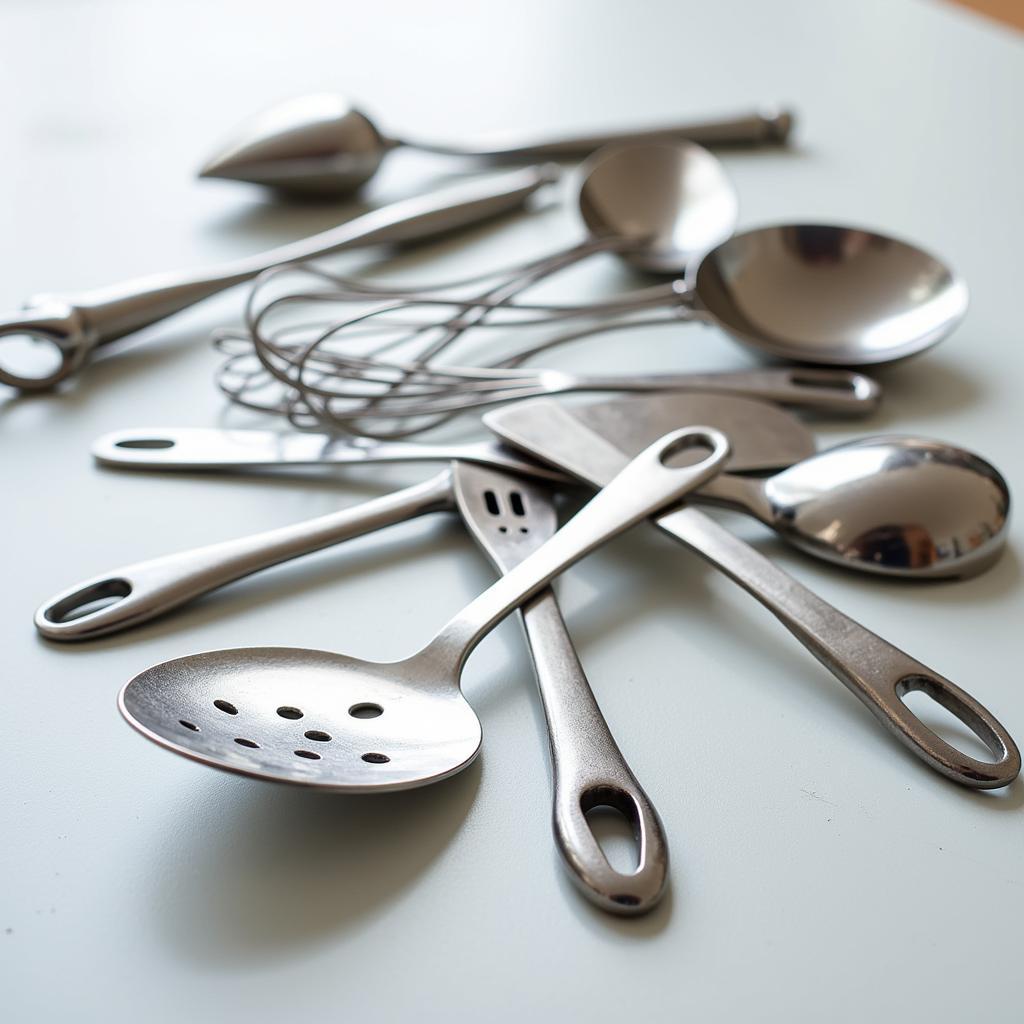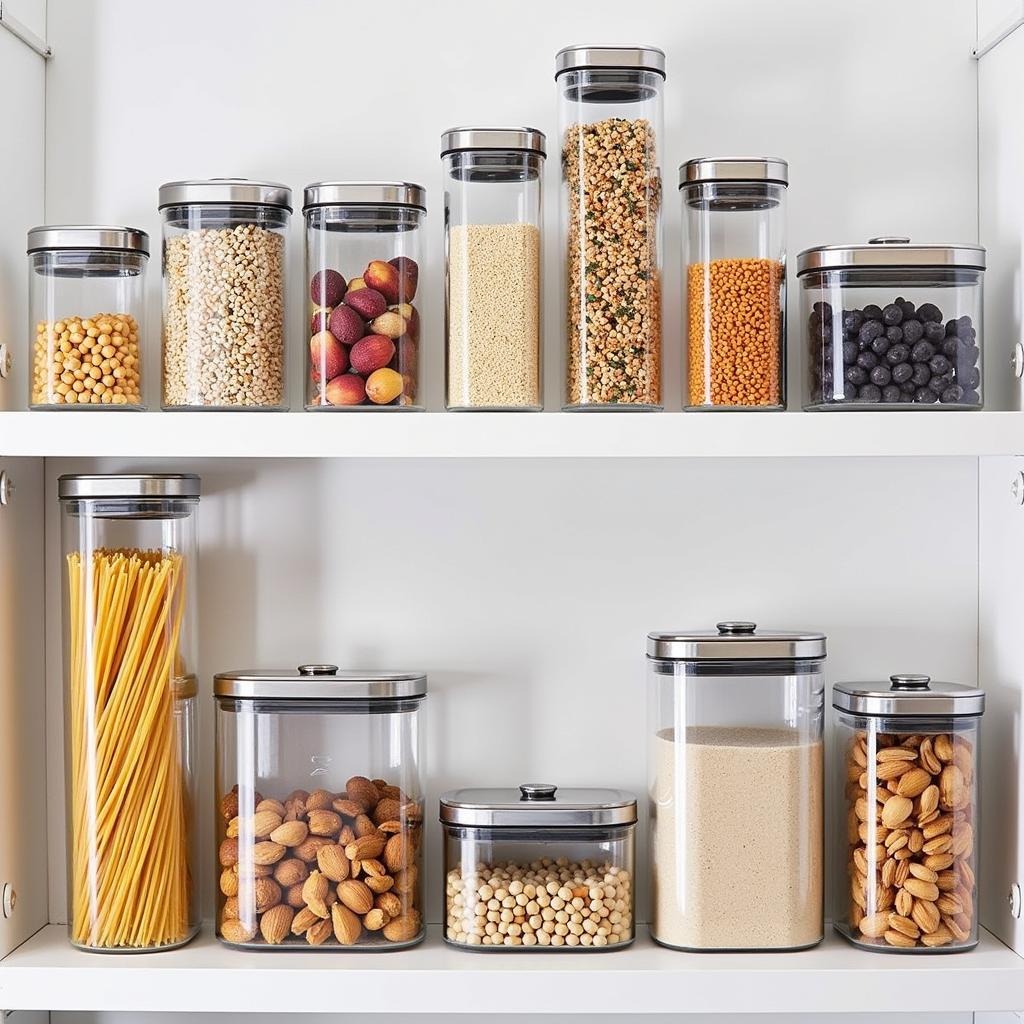When it comes to food preparation, storage, and even consumption, we often overlook the materials our food comes into contact with. Food Grade Metals, however, play a crucial role in maintaining food safety and quality. But what exactly are they, and how can you be sure you’re choosing the right ones?
 Food Grade Metal Utensils
Food Grade Metal Utensils
What are Food Grade Metals?
Food grade metals are metals specifically chosen and treated to ensure they are safe for contact with food. These metals are resistant to corrosion, rust, and leaching harmful substances into your food, even at high temperatures or after prolonged exposure to acidic ingredients. They are held to stricter standards than metals used for other purposes and are regulated by organizations like the FDA.
Why are Food Grade Metals Important?
The importance of food grade metals cannot be overstated. Using non-food grade metals can lead to:
- Metal contamination: Non-food grade metals might contain impurities or coatings that can leach into your food, posing health risks.
- Food spoilage: Some metals react with certain food components, leading to off-flavors, discoloration, or even accelerated spoilage.
- Compromised cookware durability: Non-food grade metals are more susceptible to corrosion and rust, shortening the lifespan of your cookware.
 Corroded Metal Pan
Corroded Metal Pan
Common Types of Food Grade Metals
Several metals meet the criteria for food-grade status, each with unique properties and applications:
- Stainless Steel: Known for its durability, corrosion resistance, and ease of cleaning, stainless steel is a popular choice for cookware, cutlery, and food storage containers.
- Aluminum: Lightweight and an excellent heat conductor, aluminum is commonly used for pots, pans, and baking sheets. Anodized aluminum, with a protective layer, is particularly resistant to scratches and reactions with food.
- Cast Iron: Prized for its heat retention and even heating, cast iron is ideal for searing, frying, and baking. It requires proper seasoning to maintain its non-stick surface and prevent rust.
- Copper: While beautiful and an excellent heat conductor, copper can react with acidic foods. Copper cookware often features a food-safe lining, such as tin or stainless steel, to prevent this.
Identifying Food Grade Metals
Recognizing food grade metals isn’t always straightforward. Look for these indicators:
- Labeling: Reputable manufacturers clearly label their products as “food grade” or “food safe.”
- Material specifications: Check for specific metal grades known for their food-safe properties, such as 304 or 316 stainless steel.
- Regulatory compliance: Look for markings or certifications from relevant regulatory bodies, like the FDA.
Beyond the Basics: Food Safe Solder and Adhesives
Choosing food grade metals is crucial, but don’t overlook other materials used in food contact applications. For instance, if you’re working with metal components, ensure the solder used is also food safe. You can learn more about this in our article about food safe solder. Similarly, adhesives used in food packaging or kitchen tools should also be food grade. We have a comprehensive guide on food-grade super glue to help you make informed choices.
 Food Grade Metal Storage Containers
Food Grade Metal Storage Containers
Food Grade Metals: FAQs
Here are answers to some commonly asked questions about food grade metals:
1. Is all stainless steel food grade?
Not all stainless steel is created equal. While many grades are suitable for food contact, some are not. Always look for specific designations like 304 or 316 stainless steel.
2. Can I use regular glue for food projects?
It’s best to avoid using regular glue for food-related projects. Opt for food safe adhesive for plastic or other food-grade adhesives to ensure safety.
3. Is food grade diatomaceous earth the same as the kind used for pest control?
There’s a difference between diatomaceous earth food grade vs insect killer. Be sure to choose the correct type for your intended use.
4. How do I know if my cookware is still safe to use?
Regularly inspect your cookware for signs of damage, excessive wear, or corrosion. If you notice anything concerning, it’s best to replace the item.
5. Can I use vintage cookware that might not be explicitly labeled as food grade?
While vintage cookware can hold sentimental value, it’s crucial to exercise caution. Older pieces might not adhere to modern safety standards and could pose risks. If you’re unsure about a particular item, it’s best to err on the side of caution and avoid using it for food preparation.
Conclusion
Understanding food grade metals empowers you to make safer and healthier choices for your kitchen. By choosing appropriately labeled materials and staying informed about potential risks, you can enjoy the culinary arts with peace of mind.
Remember, when it comes to food safety, it’s always better to be safe than sorry! For additional information and to explore a range of food-safe products, browse our website or contact our team. We’re here to help you make informed decisions for a healthier kitchen and a happier you.
Need help with food-grade materials?
Contact us:
Phone: 02437655121
Email: [email protected]
Visit us:
3PGH+8R9, ĐT70A, thôn Trung, Bắc Từ Liêm, Hà Nội, Việt Nam.
Our customer service team is available 24/7 to assist you.